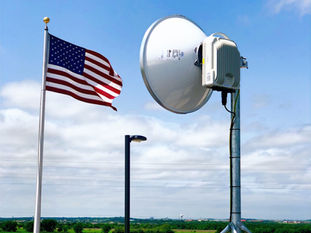
Physical Vulnerability of Fiber Compared to Wireless Backhaul
Jul 30
3 min read
1
22
0
The Physical Security Issues with Fiber Networks
Fiber optic networks have become the backbone of modern communication, offering unparalleled speed and reliability. However, despite their numerous advantages, they are not immune to physical security issues. As more organizations and individuals rely on fiber networks for their daily operations, understanding and mitigating these security risks becomes crucial.
Vulnerability to Physical Attacks
1. Physical Damage and Sabotage
Fiber optic cables are vulnerable to physical damage from construction activities or natural disasters. Accidental cuts during excavation work or storms can disrupt services for extended periods.
Wireless antennas that go out of alignment during heavy storms can be realigned in minutes, compared to days for fiber to be replaced and spliced. Wireless microwave links are typically designed for 99.999% predictable reliability and can withstand gusts of wind over 100 mph if installed properly.
Vandalism or deliberate sabotage, as witnessed recently during the Paris Olympics in France, is even more concerning. Saboteurs physically cut major fiber trunks, resulting in significant network outages nationwide. Almost all fiber runs exposed in public areas and down public streets or right of ways.
Wireless backhaul antennas and equipment is typically installed at high elevations such as tower and rooftops that are not easily accessable and in highly secure areas. Keeping them out of reach of would be vandels.

2. Fiber Tapping
Fiber tapping is a method where attackers physically access the fiber cable to intercept the data being transmitted. Unlike traditional copper cables, fiber optic cables carry light signals, making it harder to detect unauthorized access. Tapping can be done using various methods, such as bending the cable to leak light or using sophisticated optical splitters.
Microwave wireless point-to-point links designed for enterprise or carrier-grade use operate on licensed frequencies tailored for the specific path. The equipment capable of operating within these frequencies is costly and not easily accessible to the general public, making it challenging to obtain equipment that could detect, let alone intercept, a signal. Additionally, wireless backhaul links are paired and secured at the MAC layer to prevent any other devices from intercepting a signal. Radio systems may also feature 256-bit AES encryption and other security protocols.
Accessibility Issues - Both Fiber and Wireless Share the Same.
1. Unprotected Access Points
Access points where fiber optic cables connect to other network components, such as switches and routers, can be potential targets for physical tampering. These points are often located in accessible areas like data centers or network closets. This is also true for wireless where it connects to the network.
2. Lack of Physical Security Measures
Many organizations underestimate the importance of physical security for their network infrastructure. Inadequate physical security measures can leave the network exposed to various threats.
Environmental Factors
1. Harsh Environmental Conditions
Fiber optic cables deployed in harsh environments, such as underwater or in extreme temperatures, face additional physical security challenges. These conditions can lead to degradation of the cables and potential data loss.
Wireless network equipment is hardened and designed to be deployed outdoors in every environment in the world.

2. Rodent and Pest Infestation
Rodents and other pests can chew through fiber optic cables, causing significant damage and service interruptions. This is a common issue in both urban and rural deployments.
Conclusion
Although fiber optic networks provide high speeds and reliability, they come with distinctive physical security challenges. Organizations need to be proactive in safeguarding their fiber infrastructure by implementing strong security measures, conducting frequent assessments, and remaining vigilant.
Wireless backhaul is intended for outdoor use and, given its installation locations and methods, can offer enhanced physical security. Wireless technology also complements fiber optics well by offering genuine network redundancy.


